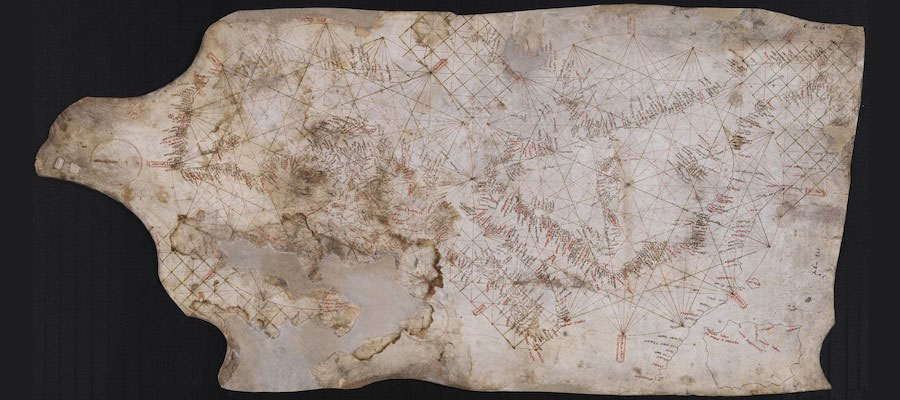Participants
Giuseppe Cacciaguerra (Institute of Heritage Science, National Research Council (ISPC-CNR))
"Northeast Passage". An Archaeology of Early Medieval Trade Networks between Sicily, Ionian and Adriatic Sea
Recent research carried out in numerous early medieval contexts in Sicily has shown that the Island was a fundamental node in the complex of Byzantine and Islamic Mediterranean trade. Eastern Sicily, and in particular Syracuse, was the privileged region for managing early medieval trade networks with the East and the Adriatic. In fact, the relations between byzantine and Islamic Sicily and the Adriatic constitute a topic of great interest for research but still little explored. Recent investigations in Sicily have made it possible to identify and document stratigraphic sequences and associated materials from the 7th to the 11th Century. The study of pottery has allowed to achieve a seriation of the amphorae circulating in Syracuse between the Byzantine and Islamic period and to provide a more accurate definition of trade and commercial trans-mediterranean dynamics of the early medieval city. The data collected show an interesting picture of the relationships between the lower Adriatic (Otranto, Butrint, etc.), the Ionian-Egyptian area (Corinth, Crete, etc.) and Easter Sicily (Syracuse) thanks to the recent contribution of the archaeometric analysis of ceramics. The presence of numerous Byzantine coins minted in Syracuse between the second half of the 7th and the 9th century and a few groups of other materials show interesting relations with the main trading centres of the middle and upper Adriatic (Venice, Comacchio, Ravenna, etc.), however, still to be interpreted. Between the 9th and 11th centuries, Islamic pressure and the conquest of large areas of territory by the Arabs led to the establishment of a new order in which Sicily no longer had a role as an active trading partner.
Marco Leo Imperiale (Università del Salento)
Co-organizer and Panelist
Trade and Material Culture along the Byzantine Strait of Otranto: the Apulian Evidence
This paper provides a picture of the commercial and cultural relations in the Southern Adriatic region through the material culture, and in particular analysing the circulation of the pottery evidence excavated along the Apulian coasts. The southern part of this region remains in Byzantine hands even after the Lombard invasion of Italy. The material cultural assemblages brought to light in the archaeologically investigated settlements, both cities and rural sites, show strong links with Byzantine models until the second half of the 9th century. This pattern reveals the existence of a cultural koiné within the lower Adriatic territories, connected with the Aegean area, with emporia in the northern Adriatic and with eastern Sicily in the south. Long-distance trade seems to have involved only the major cities or coastal towns, and it is indicated by some artefacts such as the globular amphorae, which contained wine and other foodstuffs. The revival of the Byzantine seaborne trade from the beginning of the 10th century involves the territories overlooking the Strait of Otranto. New types of amphorae, partly produced in Apulia, circulate in the Adriatic Sea and beyond, along with some goods coming from the core of the Byzantine Empire, such as the wine produced in the Propontis and fine glazed pottery from Constantinople. In this period, the material culture significantly changes. This is probably due to different influences, in a composite framework that combines technology transfer and costumes, in part directly from Byzantium, in part from other southern Italian regions, and in part under the influence of immigrants. This paper will present some of the results of the "Byzantine Heritage of Southern Italy" project, funded by the Italian University Ministry and in which five universities participate.
Rossana Valente (British School at Athens)
Co-organizer and Session Presider
Myrto Veikou (Uppsala University)
Navigating Byzantine Liminal Space – the Ionian and Southern Adriatic Seas
This paper focuses upon the intersection of two epistemological areas: (a) human perceptions (of maritime landscapes, in specific); (b) environmental ‘agency’ within historical developments. The region of the Ionian and Southern Adriatic Seas is used as ground for discussing the concept of liminality in relation to geographical and social space, in the medieval Mediterranean, based on the Byzantine paradigm.
Humans have always used the sea as a means of communication yet that use has not been unfettered. The sea imposes its own constraints on navigation mainly through its varied microclimates, due to local winds and currents, which may permit maritime traffic or prevent it. Sailing into the unknown is one thing, getting back is another; ensuring a safe return is a challenge to all past and present sailors. The discovery of navigation systems in the Mediterranean has been a long process documented by written rutters (periplous and portolan charts). The dissemination of these systems, through narratives, within historical cultures must have been crucial to their perceptions of maritime environments as well as to the successful maintenance of long-distance overseas interactions.
The present study comments on the interaction between Byzantium and its western neighbours by means of exploring perceptions of the Ionian Sea (Ἰόνιος πόντος/Ἰόνιος κόλπος) and its vicinity to the North (the Southern Adriatic Region) as liminal space –between East and West, the indigenous and the Greeks, the Christians and the Muslims etc– within the medieval Mediterranean. The discussion is based on literary and chartographic evidence (such as Byzantine navigation narratives of the 4th-15th centuries and the earliest portolan chart, the Carta Pisana) with insights on material culture.
